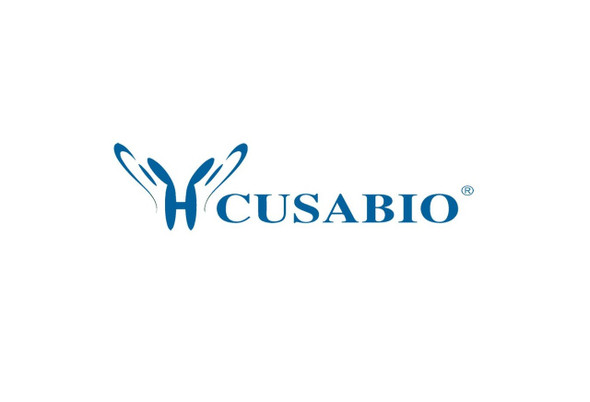Cusabio Mouse Recombinants
Recombinant Mouse Collagenase 3 (Mmp13) | CSB-EP014660MO
- SKU:
- CSB-EP014660MO
- Availability:
- 3 - 7 Working Days
Description
Recombinant Mouse Collagenase 3 (Mmp13) | CSB-EP014660MO | Cusabio
Alternative Name(s): Matrix metalloproteinase-13 ;MMP-13
Gene Names: Mmp13
Research Areas: Others
Organism: Mus musculus (Mouse)
AA Sequence: YNVFPRTLKWSQTNLTYRIVNYTPDMSHSEVEKAFRKAFKVWSDVTPLNFTRIYDGTADIMISFGTKEHGDFYPFDGPSGLLAHAFPPGPNYGGDAHFDDDETWTSSSKGYNLFIVAAHELGHSLGLDHSKDPGALMFPIYTYTGKSHFMLPDDDVQGIQFLYGPGDEDPNPKHPKTPEKCDPALSLDAITSLRGETMIFKDRFFWRLHPQQVEAELFLTKSFWPELPNHVDAAYEHPSRDLMFIFRGRKFWALNGYDILEGYPRKISDLGFPKEVKRLSAAVHFENTGKTLFFSENHVWSYDDVNQTMDKDYPRLIEEEFPGIGNKVDAVYEKNGYIYFFNGPIQFEYSIWSNRIVRVMPTNSILWC
Source: E.coli
Tag Info: N-terminal 6xHis-tagged
Expression Region: 105-472aa
Sequence Info: Full Length of Mature Protein
MW: 46.5 kDa
Purity: Greater than 90% as determined by SDS-PAGE.
Relevance: Plays a role in the degradation of Extracellular domain matrix proteins including fibrillar collagen, fibronectin, TNC and ACAN. Cleaves triple helical collagens, including type I, type II and type III collagen, but has the highest activity with soluble type II collagen. Can also degrade collagen type IV, type XIV and type X. May also function by activating or degrading key regulatory proteins, such as TGFB1 and CTGF. Plays a role in wound healing, tissue rodeling, cartilage degradation, bone development, bone mineralization and ossification. Required for normal bryonic bone development and ossification. Plays a role in the healing of bone fractures via endochondral ossification. Plays a role in wound healing, probably by a mechanism that involves proteolytic activation of TGFB1 and degradation of CTGF. Plays a role in keratinocyte migration during wound healing. May play a role in cell migration and in tumor cell invasion.
Reference: Role of matrix metalloproteinase 13 in both endochondral and intramembranous ossification during skeletal regeneration.Behonick D.J., Xing Z., Lieu S., Buckley J.M., Lotz J.C., Marcucio R.S., Werb Z., Miclau T., Colnot C.PLoS ONE 2:E1150-E1150(2007)
Storage: The shelf life is related to many factors, storage state, buffer ingredients, storage temperature and the stability of the protein itself. Generally, the shelf life of liquid form is 6 months at -20?/-80?. The shelf life of lyophilized form is 12 months at -20?/-80?.
Notes: Repeated freezing and thawing is not recommended. Store working aliquots at 4? for up to one week.
Function: Plays a role in the degradation of extracellular matrix proteins including fibrillar collagen, fibronectin, TNC and ACAN. Cleaves triple helical collagens, including type I, type II and type III collagen, but has the highest activity with soluble type II collagen. Can also degrade collagen type IV, type XIV and type X. May also function by activating or degrading key regulatory proteins, such as TGFB1 and CTGF. Plays a role in wound healing, tissue remodeling, cartilage degradation, bone development, bone mineralization and ossification. Required for normal embryonic bone development and ossification. Plays a role in the healing of bone fractures via endochondral ossification. Plays a role in wound healing, probably by a mechanism that involves proteolytic activation of TGFB1 and degradation of CTGF. Plays a role in keratinocyte migration during wound healing. May play a role in cell migration and in tumor cell invasion.
Involvement in disease:
Subcellular Location: Secreted, extracellular space, extracellular matrix, Secreted
Protein Families: Peptidase M10A family
Tissue Specificity: Detected in epidermal cells and stromal fibroblasts in wounded skin, but not in normal skin (at protein level). Detected in embryonic hypertrophic chondrocytes and newly recruited bone cells at primary ossification centers. After adult bone fracture, detected in periosteum and in chondrocytes in the cartilage. Detected in immature and mature osteoblasts in the fracture callus. Detected in calvaria from neonates. Detected in wounded skin, but not in normal skin.
Paythway:
Form: Liquid or Lyophilized powder
Buffer: If the delivery form is liquid, the default storage buffer is Tris/PBS-based buffer, 5%-50% glycerol. If the delivery form is lyophilized powder, the buffer before lyophilization is Tris/PBS-based buffer, 6% Trehalose, pH 8.0.
Reconstitution: We recommend that this vial be briefly centrifuged prior to opening to bring the contents to the bottom. Please reconstitute protein in deionized sterile water to a concentration of 0.1-1.0 mg/mL.We recommend to add 5-50% of glycerol (final concentration) and aliquot for long-term storage at -20?/-80?. Our default final concentration of glycerol is 50%. Customers could use it as reference.
Uniprot ID: P33435
HGNC Database Link: N/A
UniGene Database Link: UniGene
KEGG Database Link: KEGG
STRING Database Link: STRING
OMIM Database Link: N/A









